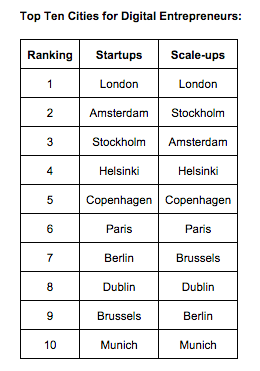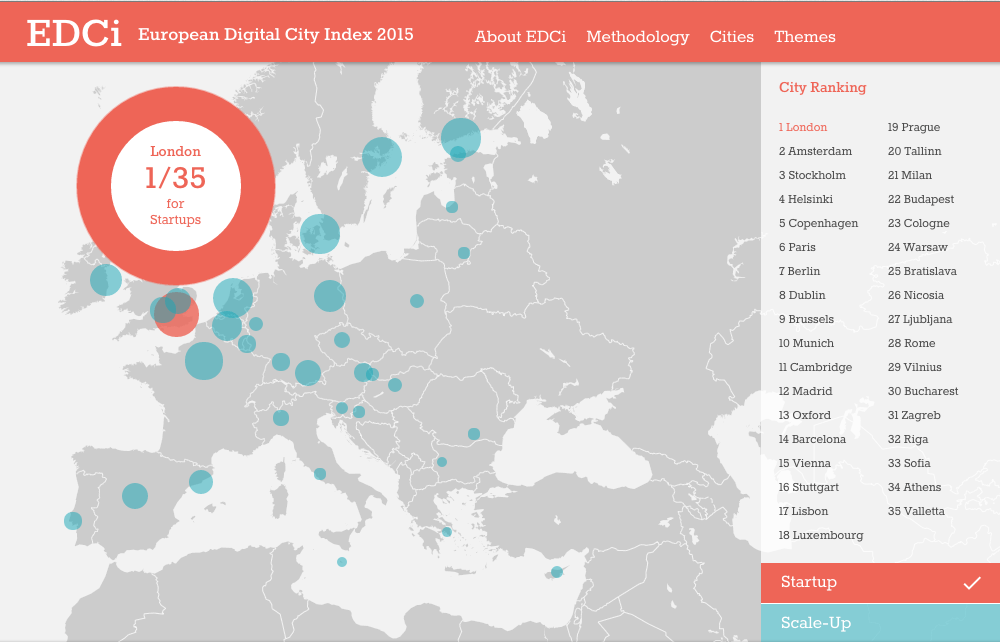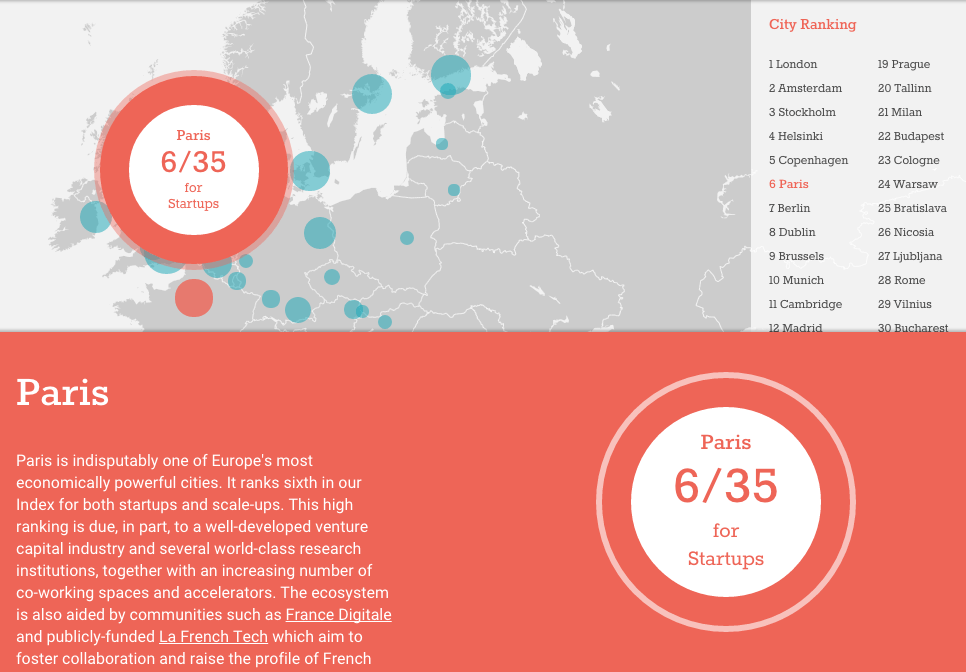Generating business ideas is a skill. You can develop a habit to see an economic opportunity in everything around you.
1. Live in the future
Be close to cutting edge technology. Use something that was not available yesterday. Read news about new inventions. Think about products for young people.
The future belongs to wearable computers, self-driving cars, DNA tests, and atom-thin materials. What product and services should exist around these big innovation themes?
Think of some major upcoming change and complete the sentence “if you live in the future ...”. For example, “if you live in the future, all cars are electric” or “if you live in the future, nobody uses cash”. Then build a company to make it happen.
2. Become an expert
There are specialized fields that are not open to anyone from the street. Customs, prisons, medical devices, military contracts, nuclear plants, bridge construction. Typically, you can start a company in these areas only after years of professional experience. Be an insider and you can start a business in a large market with high barrier to entry.
Michael Bloomberg was the head of IT at investment bank Salomon Brothers. He was laid off in 1981 with 10M$ severance package. Bloomberg used this money to start a new company to offer information services for financial organizations. To this day, Bloomberg L.P. is the leader of financial data market.
Be a master of some powerful tool. Learn how to make mobile apps, build online marketplaces, or use data science. Then meet a lot of people, learn about their challenges and see, whether you can use your skill to help.
Be really good at two different things. Medicine and sales, IT and government contracting, culinary arts and retail. Field intersections are full of unique opportunities.
3. Scratch your own itch
Find the problem you want to solve for yourself. Look for things you were not able to find a good solution for. New problems come when something changed in your life. E.g. you start seeing a lot of opportunities when you become a parent.
Same happens in B2B market. You have one company and can not find a good solution for something. You start a second company to solve it and the second one becomes bigger than the original one.
Stripe was founded by Patrick Collison out of frustration from payment solutions he used for his previous projects. Flickr was initially a game that has a need to store user images online.
4. Look for pain points
Look for wasted time and money, inefficiency, suffering, losses. Then start a project to fix it. Learn more about hunger, poverty, epidemics, unemployment, crime, road congestion, pollution, and corruption. Become friends with people who work on these problems for many years.
Generally it is much better to start with a great problem and no solution than with a brilliant solution that solves no problem.
5. Do something much better
Look for things people hate to do. Hunting for rent, parking, getting visas, commute, visiting a doctor. Figure out a better way to do these things.
Use technology to rethink how things should be done. How should construction workers do their job at the time of smartphones? How should hospitals work in the digital age?
There are market leaders with almost monopoly power over market and no incentive to improve. Challenging these monster incumbents can very hard, but sometimes it works. Virgin Atlantic started with a mission to beat British Airways in customer service.
6. Connect cheap supply with rich buyers
Buy low, sell high. This simple formula continues to work for centuries. There is a lot of cheap manufacturing resources in China. There is cheap labor in developing countries. There are cheap buildings to buy or rent. On the other side there are people with disposable income and unmet needs. Connect them!
Freelance marketplaces like Odesk or 99Designs are connecting remote workers in developing countries with companies across the world.
7. Copy and improve
Most ideas are derivative. Many successful businesses started as a copy. Look what you can add to existing ideas. Is it new sales channels, better customer service, better quality?
There always trendy ideas for small businesses. One year coworking spaces and bubble tea stands are popular, then everyone talks about private kindergartens, then there is a wave of SMM agencies.These waves move around the world with a significant delay. You can start a business inspired by one of the current waves. It is safer than unproven innovation and more fun than buying a franchise.
In USA every college has branded merchandise, like hoodies, t-shirts and caps. In Russia, it was not common. One student decided to change that. He started a company to produce university-themed clothing for all colleges in the country. Now you can see students in his clothing at every campus.
8. Travel
Learn about popular and successful businesses in other parts of the world. Every industry has its innovation centers. Fashion business ideas can come from Paris and Guangzhou, software ideas come from Silicon Valley, financial ideas come from New York and London.
In early eighties Howard Schultz was an employee at Starbucks. At the time Starbucks was only selling whole bean coffee. No drinks we offered in the store. On a buying trip to Milan, Italy, Schultz noted that coffee bars existed on practically every street. He learned that they not only served excellent espresso, they also served as meeting places or public squares; they were a big part of Italy's societal glue, and there were 200,000 of them in the country. On his return, he tried to persuade the owners (including Jerry Baldwin) to offer traditional espresso beverages. Howard failed to convince Jerry, left Starbucks and started his own chain of espresso bars. A few years later he bought Starbucks, merged it with his existing coffee bar chain and made Starbucks a global phenomenon.
9. Follow up a market change
New products from big companies create new markets. If you react fast enough, you can claim a part of newly created market.
Venture capitalists understand this rule. That’s why they create special investment funds for Facebook apps, iPhone apps, Google Glass apps, and Bitcoin ecosystem. Whenever there is a big change, entrepreneurs and investors come to take advantage of it.
The same method works for local businesses. Follow up new construction developments like new subway stations, airports, or gentrification processes.
In 1975 MITS developed the first commercially successful home computer, Altair 8800. One student from Harvard decided that selling software programs for Altair 8800 can be a business. He and his friends wrote BASIC interpreter for Altair 8800 and started selling it in partnership with MITS. The company was called Micro-Soft and the student was Bill Gates.
10. Iterate from useless product
Release anything in 1-3 days. Then ask friends what should you change to get them use it. Release an update. Ask again. Repeat until you have a mass-desired product.
Most European countries have the same fairy tale about a “stone soup”.
A lost soldier comes to a village, carrying nothing more than an empty cooking pot. The soldier fills the pot with water, drop a large stone in it, and place it over a fire. One of the villagers becomes curious and asks what they are doing?. The soldier answers that he is making “stone soup”, which tastes wonderful, although it still needs a little bit of vegetables to improve the flavour. The villager does not mind parting with a few carrots to help them out, so that gets added to the soup. More and more villagers walk by, each adding another ingredient. Finally, a delicious and nourishing pot of soup is enjoyed by all.
11. Talk to smart people
There are people who have more good ideas that they can implement themselves. Ask them. You can get not only an idea, but also a set of initial customers.
Entrepreneurs love their own ideas and discount ideas from others. But sometimes the best opportunity can come from someone else.
Elon Musk gave an idea of solar panel installation and service company to his cousins Lyndon and Peter Rive. SolarCity is now a multibillion-dollar public company.
Not so good ways to generate ideas
There are some popular ways to generate ideas that in many cases lead to failed projects. You should be very cautious to use them.
Analogy
Doing X for Y, like “Metropolitan Museum for digital art” is a common way to generate ideas. Unfortunately, most of these ideas fail. Most likely, your market has a very different problem and a solution from some other market would not work. If problems are, indeed, similar, then the original solution could have been extended to your market. “Google for restaurants” is just Google.
Clear you mind from all product visions
“Product vision”
Many entrepreneurs start with a detailed vision of a new product with all its features. It’s quite easy to imagine a new restaurant concept or a TV Series idea. These visions have little relation to market demand and rarely take off. Most good ideas start with a customer.
Every idea has its drawbacks
Your best ideas will come with some disadvantage. Recognize and acknowledge their weaknesses. You can still pursue them, if there is a good way to counter the drawbacks.
Do not filter out ideas with a lot of hard and unpleasant work. If you can pull it off, there will be less competition and your business will be highly defensible against future entrants.
The presence of successful competitors is typically good, as it proves the existence of demand. If you have a clear differentiation and the proof that this difference can attract enough customers from competitors, you can enter a competitive market.
Sometimes a successful business starts with a tiny initial market. It can work out if (1) the demand is very strong, (2) there is a realistic way to extend your product to a broader market, and (3) you have enough resources to support your way to a broader market.
Ideas come from conversations. Discuss trends, markets and your current ideas with everyone. Fresh insights are guaranteed to follow.
Ideas come from empathy. Learn the pain of other people and you can discover new solutions.
Ideas come from curiosity. How the things should work? How the future will look like?
Ideas come from subconscious. Write down your business area and idea requirements. Then just go do the other work. Few days later a moment of enlightenment can come to you.
NOTE CREDIT:
https://medium.com/@earlydays_io/how-to-find-new-business-opportunities-c2f314c7df86











